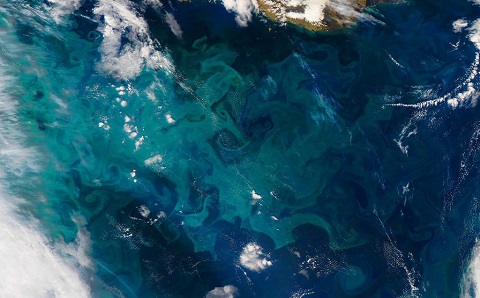A novel study solves the mystery of the ocean carbon budget
One of the major challenges in oceanography has been constraining ocean carbon budgets.

For many years, scientists found that the amount of carbon needed to support marine life appeared to exceed what was produced through primary production (the organic carbon created by phytoplankton using sunlight and nutrients in the upper ocean). This mismatch suggested something was off in these budgets
However, a recent study involving ICTA-UAB has managed to solve this puzzle and shows that it is indeed possible to constrain ocean carbon budgets.
By combining data collected through various methods and over longer periods of time, the research team found that the carbon produced by phytoplankton at the ocean surface can, in fact, meet the needs of marine organisms living at depths of up to 500 meters.
The new synthesis article, led by Brandon Stephens from the National Taiwan University and Muntsa Roca-Martí from ICTA-UAB, has been recently published in the scientific journal Biogeosciences.
The team focused on the Northeast Pacific and used observations collected during an oceanographic expedition with two research ships in the summer of 2018. They also used data from autonomous platforms (such as ocean robots) that took ocean measurements before, during, and after the expedition. This novel mix of methods allowed them to see that the carbon produced at the ocean surface through photosynthesis can actually meet the needs of marine life living at depths down to 500 meters.
In short, the study helps complete the puzzle of how carbon moves through the ocean. The results show that, with the right tools and long-term monitoring, carbon can be traced from the moment it is produced at the surface to when it is consumed or stored in the deep ocean. The study provides a set of recommendations to improve our understanding of the ocean's role in the global carbon cycle, both today and in the future.
This research is the result of several years of collaboration among more than ten research teams from different fields of oceanography, brought together under the EXPORTS program (https://oceanexports.org/), funded by NASA and the U.S. National Science Foundation.
Reference:
Stephens, B. M., Roca-Martí, M., Maas, A. E., Amaral, V. J., Clevenger, S., Traylor, S., Benitez-Nelson, C. R., Boyd, P. W., Buesseler, K. O., Carlson, C. A., Cassar, N., Estapa, M., Fassbender, A. J., Huang, Y., Lam, P. J., Marchal, O., Menden-Deuer, S., Paul, N. L., Santoro, A. E., Siegel, D. A., and Nicholson, D. P.: An upper-mesopelagic-zone carbon budget for the subarctic North Pacific, Biogeosciences, 22, 3301–3328, https://doi.org/10.5194/bg-22-3301-2025, 2025.